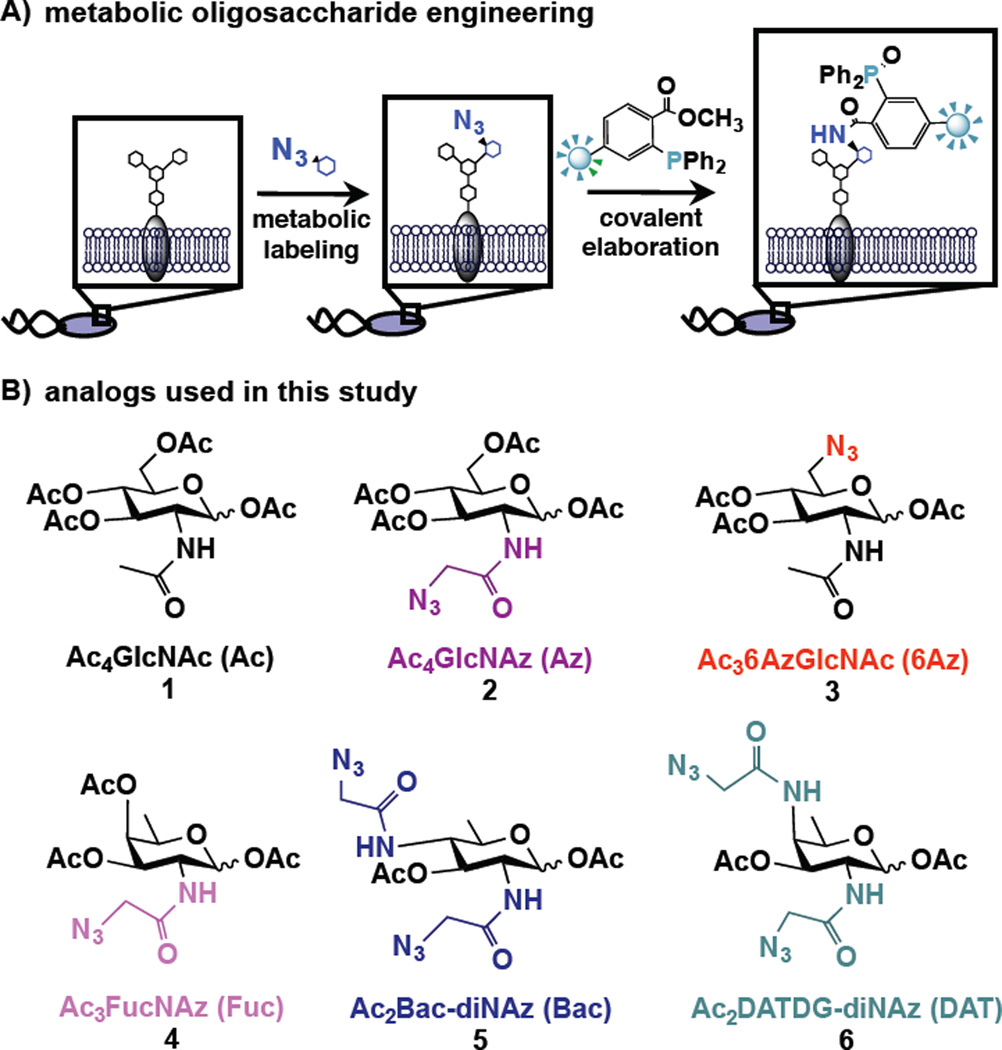Figure 2.
Schematic overview of metabolic oligosaccharide engineering (MOE) experiments performed, and structures of monosaccharide analogs used in this study. A) In MOE experiments, cells are first metabolically labeled with an unnatural azide-containing sugar. Azide-bearing glycans then undergo Staudinger ligation with phosphine probes to enable their detection on cells or in cell lysates. B) Metabolic incorporation of azide-containing analogs of the naturally abundant monosaccharide N-acetylglucosamine (GlcNAc) as well as of the rare bacterial monosaccharides FucNAc (4), bacillosamine (5), and DATDG (6) were explored in this work.

